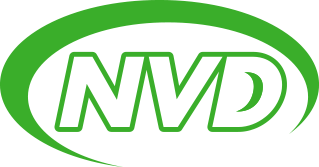FAQ
Check out the resources below for some quick answers to our most asked questions.
Service Request Form
Current Lead Times
FREQUENTLY ASKED QUESTIONS
FREQUENTLY ASKED
QUESTIONS
WHAT ARE YOUR SHIPPING COSTS?
All shipments are sent with UPS Signature Required. Please ensure someone is available to receive package.
WHAT IS YOUR PROCESSING TIME?
WHAT PAYMENT FORMS DO YOU ACCEPT?
WHAT IS YOUR INTERNATIONAL SHIPPING POLICY?
WHAT IS YOUR RETURN POLICY?
HOW DOES NIGHT VISION WORK?
Performance is the most important factor in night vision capabilities. Will a particular device allow you to see objects in near complete darkness? Night vision equipment offered by Night Vision Devices, Inc. will provide high quality images under extremely low light conditions such as cloudy, no moon nights. There are several terms used to compare the qualities of one tube to another. These specifications, such as Resolution, Signal-to-noise, and Photocathode Response will determine how well a system will perform in these adverse conditions. NVD classifies the performance of each system with FOM rating. Figure of Merit, or FOM, is the calculation of Signal to Noise multiplied by Resolution. Each of NVD’s products are classified by a minimum FOM rating of 1600, 1900, or 2300.
HOW DOES THERMAL WORK?
The infrared energy is scanned by a phased array of infrared-detector elements (microbolometers), which detect changes in temperature. The detector elements create a very detailed temperature pattern called a thermogram. It only takes about one-thirtieth of a second for the detector array to obtain the temperature information to make the thermogram. This information is obtained from several thousand points in the field of view of the infrared detector. The thermogram created by the detector elements is translated into electric impulses.
The impulses are sent to a signal-processing unit, a circuit board with a dedicated chip that translates the information from the elements into data for the display. The signal-processing unit sends the information to the display, where it appears as various colors depending on the intensity of the infrared emission.
Unlike traditional night-vision equipment, which uses image-enhancement technology, thermal imaging is great for detecting people or working in near-absolute darkness with little or no ambient lighting (i.e. stars, moonlight, etc,). It can display heat on a car that was just driven amongst others that were parked for some time.
WHAT IS ISO CERTIFICATION?
Night Vision Devices, Inc. has been awarded the ISO 9001:2015 Management System certificate by the Performance Review Institute Registrar in Warrendale, Pennsylvania. This certificate validates the company’s level of performance for the Design, Manufacture, Sales and Servicing of Night Vision and Thermal Devices.
WHAT IS THE END USER STATEMENT?
CAN I EXPORT NIGHT VISION EQUIPMENT?
Night Vision Devices, Inc. will not complete any transaction that requires the illegal export of products and will not assist directly or indirectly with any illegal export or re-export of any products.
Full ITAR language can be found here: https://www.pmddtc.state.gov/regulations_laws/itar_official.html
It is a violation of ITAR to allow any non-U.S. person to use or look through U.S. Gen III Night Vision Equipment, or to have access to any operator’s manual or documentation pertaining to U.S. Gen III Night Vision Equipment.
WILL MY PURCHASE BE COVERED UNDER WARRANTY?
CAN MY PURCHASE BE REPAIRED?
CAN YOU BUY USED/REFURBISHED EQUIPMENT?
HOW CAN I BECOME A DEALER?
WHERE CAN I FIND RESOURCES TO FUND NEW EQUIPMENT?
– PoliceOne.com – We highly recommend PoliceOne’s online grant assistance. See the detailed list of all available grants through product categories and due dates:
– Grants.gov
– DHS – State Contacts and Grant Award Information
– Weed & Seed
– Dept. of Commerce Grants
– DHS/FEMA Grants
ABC (Automatic Brightness Control / Auto Gated)
Black Spots/Blemish
BSP (Bright Source Protection)
Diopter
EBI (Equivalent Background Illumination)
Emission Point
Eye Relief
Field of View
FOM (Figure of Merit)
FOM is a number calculated by multiplying the Signal-to-noise ratio by the resolution of a night vision image intensifier. FOM number allows quickly estimate general performance level of the specific night vision image intensifier, and consequently the night vision device built around it.
